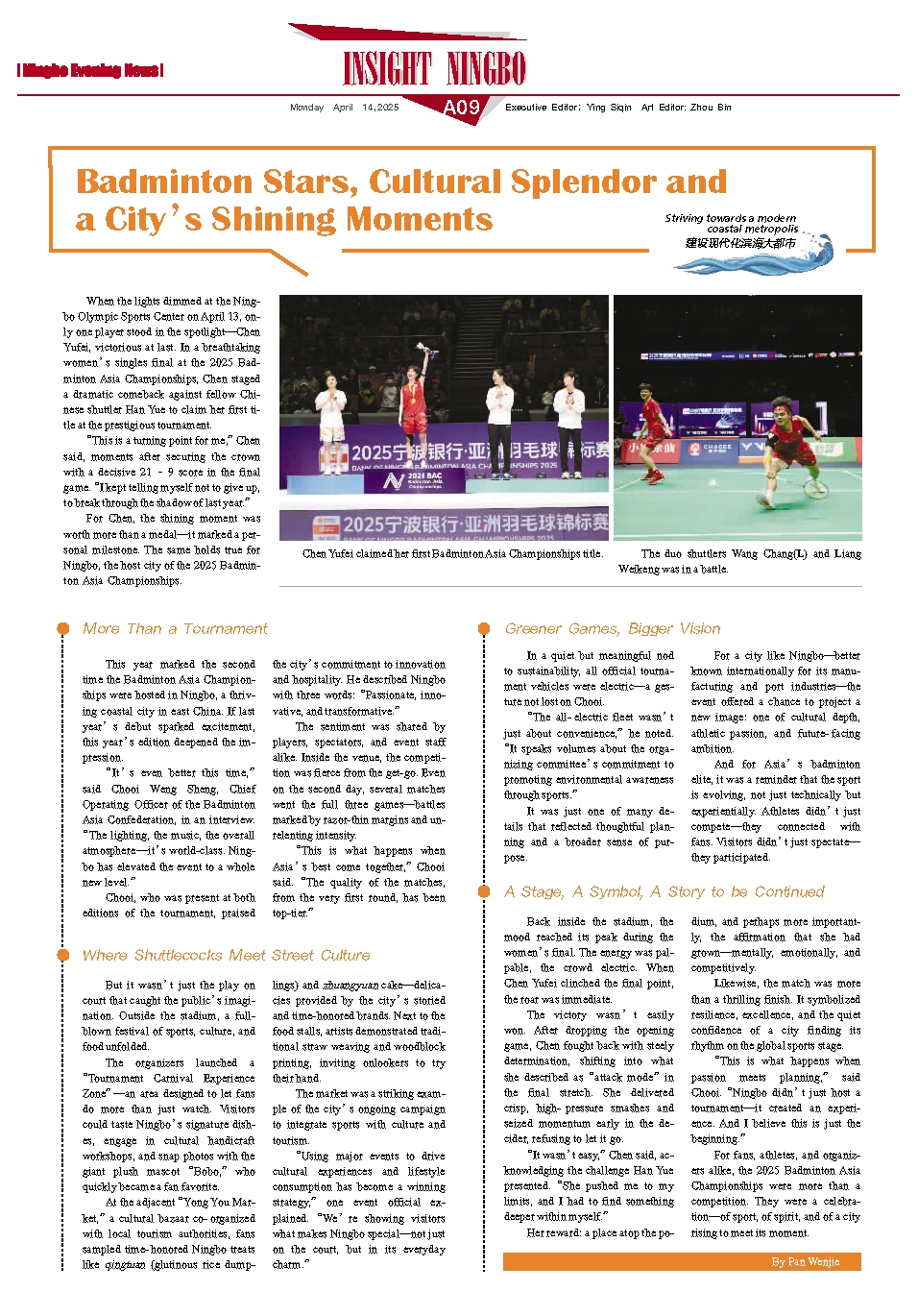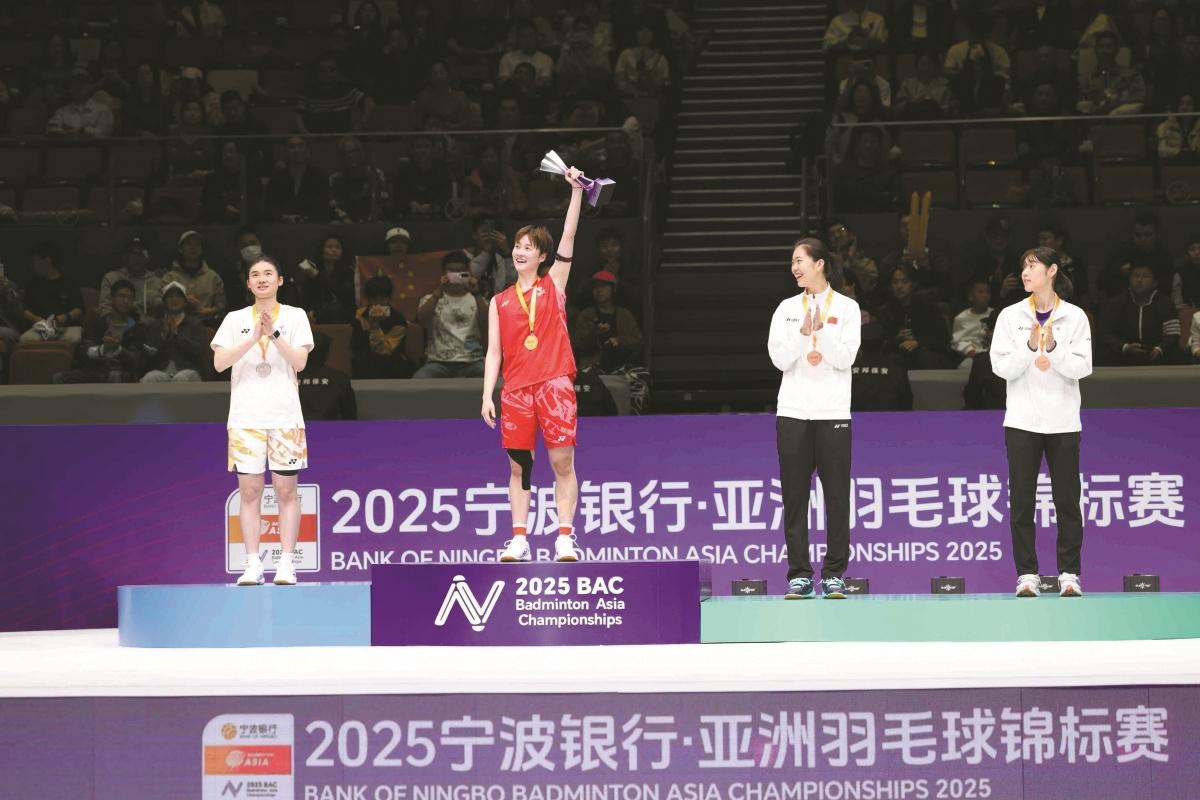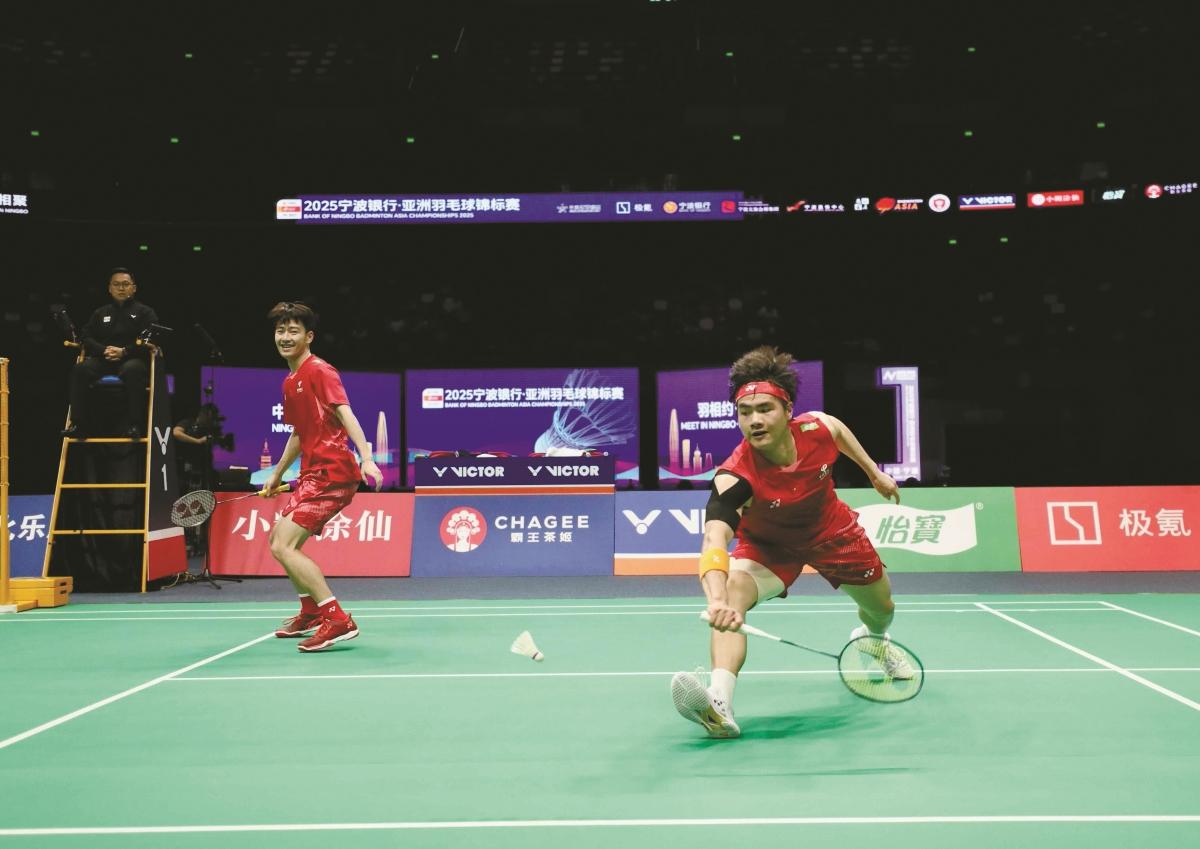When the lights dimmed at the Ningbo Olympic Sports Center on April 13, only one player stood in the spotlight—Chen Yufei, victorious at last. In a breathtaking women’s singles final at the 2025 Badminton Asia Championships, Chen staged a dramatic comeback against fellow Chinese shuttler Han Yue to claim her first title at the prestigious tournament.
“This is a turning point for me,” Chen said, moments after securing the crown with a decisive 21–9 score in the final game. “I kept telling myself not to give up, to break through the shadow of last year.”
For Chen, the shining moment was worth more than a medal—it marked a personal milestone. The same holds true for Ningbo, the host city of the 2025 Badminton Asia Championships.
More Than a Tournament
This year marked the second time the Badminton Asia Championships were hosted in Ningbo, a thriving coastal city in east China. If last year’s debut sparked excitement, this year’s edition deepened the impression.
“It’s even better this time,” said Chooi Weng Sheng, Chief Operating Officer of the Badminton Asia Confederation, in an interview. “The lighting, the music, the overall atmosphere—it’s world-class. Ningbo has elevated the event to a whole new level.”
Chooi, who was present at both editions of the tournament, praised the city’s commitment to innovation and hospitality. He described Ningbo with three words: “Passionate, innovative, and transformative.”
The sentiment was shared by players, spectators, and event staff alike. Inside the venue, the competition was fierce from the get-go. Even on the second day, several matches went the full three games—battles marked by razor-thin margins and unrelenting intensity.
“This is what happens when Asia’s best come together,” Chooi said. “The quality of the matches, from the very first round, has been top-tier.”
Where Shuttlecocks Meet Street Culture
But it wasn’t just the play on court that caught the public’s imagination. Outside the stadium, a full-blown festival of sports, culture, and food unfolded.
The organizers launched a “Tournament Carnival Experience Zone”—an area designed to let fans do more than just watch. Visitors could taste Ningbo’s signature dishes, engage in cultural handicraft workshops, and snap photos with the giant plush mascot “Bobo,” who quickly became a fan favorite.
At the adjacent “Yong You Market,” a cultural bazaar co-organized with local tourism authorities, fans sampled time-honored Ningbo treats like qingtuan (glutinous rice dumplings) and zhuangyuan cake—delicacies provided by the city’s storied and time-honored brands. Next to the food stalls, artists demonstrated traditional straw weaving and woodblock printing, inviting onlookers to try their hand.
The market was a striking example of the city’s ongoing campaign to integrate sports with culture and tourism.
“Using major events to drive cultural experiences and lifestyle consumption has become a winning strategy,” one event official explained. “We’re showing visitors what makes Ningbo special—not just on the court, but in its everyday charm.”
Greener Games, Bigger Vision
In a quiet but meaningful nod to sustainability, all official tournament vehicles were electric—a gesture not lost on Chooi.
“The all-electric fleet wasn’t just about convenience,” he noted. “It speaks volumes about the organizing committee’s commitment to promoting environmental awareness through sports.”
It was just one of many details that reflected thoughtful planning and a broader sense of purpose.
For a city like Ningbo—better known internationally for its manufacturing and port industries—the event offered a chance to project a new image: one of cultural depth, athletic passion, and future-facing ambition.
And for Asia’s badminton elite, it was a reminder that the sport is evolving, not just technically but experientially. Athletes didn’t just compete—they connected with fans. Visitors didn’t just spectate—they participated.
A Stage, A Symbol, A Story to be Continued
Back inside the stadium, the mood reached its peak during the women’s final. The energy was palpable, the crowd electric. When Chen Yufei clinched the final point, the roar was immediate.
The victory wasn’t easily won. After dropping the opening game, Chen fought back with steely determination, shifting into what she described as “attack mode” in the final stretch. She delivered crisp, high-pressure smashes and seized momentum early in the decider, refusing to let it go.
“It wasn’t easy,” Chen said, acknowledging the challenge Han Yue presented. “She pushed me to my limits, and I had to find something deeper within myself.”
Her reward: a place atop the podium, and perhaps more importantly, the affirmation that she had grown—mentally, emotionally, and competitively.
Likewise, the match was more than a thrilling finish. It symbolized resilience, excellence, and the quiet confidence of a city finding its rhythm on the global sports stage.
“This is what happens when passion meets planning,” said Chooi. “Ningbo didn’t just host a tournament—it created an experience. And I believe this is just the beginning.”
For fans, athletes, and organizers alike, the 2025 Badminton Asia Championships were more than a competition. They were a celebration—of sport, of spirit, and of a city rising to meet its moment.
By Pan Wenjie




